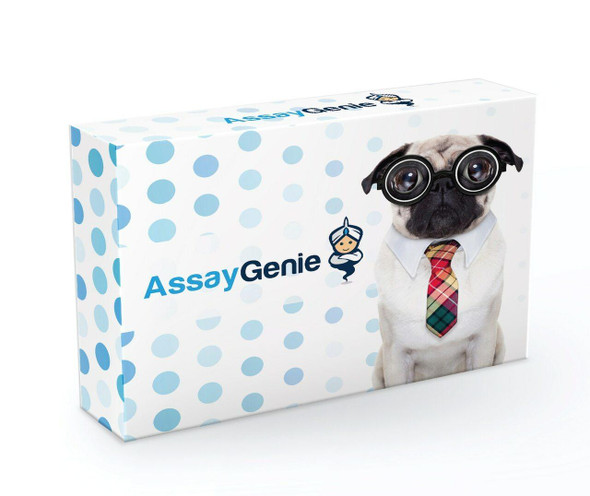KLHL3 Antibody (PACO23772)
- SKU:
- PACO23772
- Product Type:
- Antibody
- Reactivity:
- Human
- Host Species:
- Rabbit
- Isotype:
- IgG
- Applications:
- ELISA
- WB
- IHC
- IF
- Antibody Type:
- Polyclonal Antibody
- Conjugation:
- Unconjugated
Description
KLHL3 Antibody (PACO23772)
The KLHL3 Antibody (PAC023772) is a polyclonal antibody designed for research involving KLHL3, a substrate adaptor protein for cullin-3 E3 ubiquitin ligase complex. The antibody, raised in rabbits, is highly reactive with human samples and is validated for use in applications such as Western blot, immunoprecipitation, and immunofluorescence. It binds specifically to the KLHL3 protein, allowing for accurate detection and analysis in various cell types.KLHL3 is known for its role in targeting specific substrates for ubiquitination and degradation, influencing various cellular processes such as cell cycle progression, signal transduction, and protein stability.
Dysfunction in the KLHL3-cullin-3 complex has been associated with several diseases, including hypertension and chronic kidney disease. Research into the function of KLHL3 is essential for understanding its role in these pathologies and developing potential therapeutic interventions.The KLHL3 Antibody is a valuable tool for investigators studying the molecular mechanisms of protein degradation, cellular signaling, and disease pathology. Its high specificity and sensitivity make it an ideal choice for experiments aimed at unraveling the functions of KLHL3 and its potential implications in various health conditions.
| Antibody Name: | KLHL3 Antibody (PACO23772) |
| Antibody SKU: | PACO23772 |
| Size: | 100ul |
| Host Species: | Rabbit |
| Tested Applications: | ELISA, WB, IHC, IF |
| Recommended Dilutions: | ELISA:1:2000-1:10000, WB:1:500-1:3000, IHC:1:50-1:100, IF:1:100-1:500 |
| Species Reactivity: | Human |
| Immunogen: | Synthesized peptide derived from N-terminal of human KLHL3. |
| Form: | Liquid |
| Storage Buffer: | Rabbit IgG in phosphate buffered saline (without Mg2+ and Ca2+), pH 7.4, 150mM NaCl, 0.02% sodium azide and 50% glycerol. |
| Purification Method: | The antibody was affinity-purified from rabbit antiserum by affinity-chromatography using epitope-specific immunogen. |
| Clonality: | Polyclonal |
| Isotype: | IgG |
| Conjugate: | Non-conjugated |
 | Western blot analysis of extracts from RAW264.7 cells and 3T3 cells, using KLHL3 antibody. |
 | Immunofluorescence analysis of A549 cells, using KLHL3 antibody. |
 | Immunohistochemistry analysis of paraffin-embedded human brain tissue, using KLHL3 antibody. |
| Background: | Substrate-specific adapter of a BCR (BTB-CUL3-RBX1) E3 ubiquitin ligase complex that acts as a regulator of ion transport in the distal nephron. The BCR(KLHL3) complex acts by mediating ubiquitination of WNK4, an inhibitor of potassium channel KCNJ1, leading to WNK4 degradation. |
| Synonyms: | Kelch-like protein 3; KIAA1129; |
| UniProt Protein Function: | KLHL3: Substrate-specific adapter of a BCR (BTB-CUL3-RBX1) E3 ubiquitin ligase complex that acts as a regulator of ion transport in the distal nephron. The BCR(KLHL3) complex may act by mediating ubiquitination of SLC12A3/NCC, thereby regulating SLC12A3/NCC subcellular location at the cell membrane. Defects in KLHL3 are the cause of Pseudohypoaldosteronism type 2D (PHA2D). A disorder characterized by severe hypertension, hyperkalemia, hyperchloremia, hyperchloremic metabolic acidosis, and correction of physiologic abnormalities by thiazide diuretics. PHA2D inheritance is autosomal dominant or recessive. 3 isoforms of the human protein are produced by alternative splicing. |
| UniProt Protein Details: | Protein type:Cytoskeletal; Actin-binding Chromosomal Location of Human Ortholog: 5q31 Cellular Component: cytosol Molecular Function:protein binding; structural molecule activity; ubiquitin-protein ligase activity Biological Process: ion homeostasis; protein ubiquitination; protein ubiquitination during ubiquitin-dependent protein catabolic process Disease: Pseudohypoaldosteronism, Type Iid |
| NCBI Summary: | This gene is ubiquitously expressed and encodes a full-length protein which has an N-terminal BTB domain followed by a BACK domain and six kelch-like repeats in the C-terminus. These kelch-like repeats promote substrate ubiquitination of bound proteins via interaction of the BTB domain with the CUL3 (cullin 3) component of a cullin-RING E3 ubiquitin ligase (CRL) complex. Muatations in this gene cause pseudohypoaldosteronism type IID (PHA2D); a rare Mendelian syndrome featuring hypertension, hyperkalaemia and metabolic acidosis. Alternative splicing results in multiple transcript variants encoding distinct isoforms. [provided by RefSeq, Mar 2012] |
| UniProt Code: | Q9UH77 |
| NCBI GenInfo Identifier: | 13431657 |
| NCBI Gene ID: | 26249 |
| NCBI Accession: | Q9UH77.2 |
| UniProt Secondary Accession: | Q9UH77,Q9UH75, Q9UH76, Q9ULU0, Q9Y6V6, B2RBK7, |
| UniProt Related Accession: | Q9UH77 |
| Molecular Weight: | 55,927 Da |
| NCBI Full Name: | Kelch-like protein 3 |
| NCBI Synonym Full Names: | kelch like family member 3 |
| NCBI Official Symbol: | KLHL3 |
| NCBI Official Synonym Symbols: | PHA2D |
| NCBI Protein Information: | kelch-like protein 3 |
| UniProt Protein Name: | Kelch-like protein 3 |
| Protein Family: | Kelch-like protein |
| UniProt Gene Name: | KLHL3 |
| UniProt Entry Name: | KLHL3_HUMAN |
















